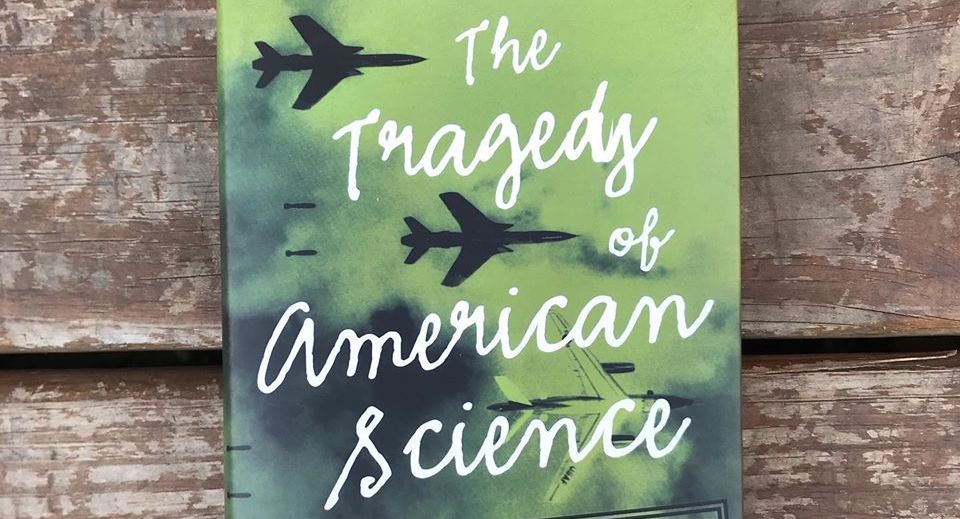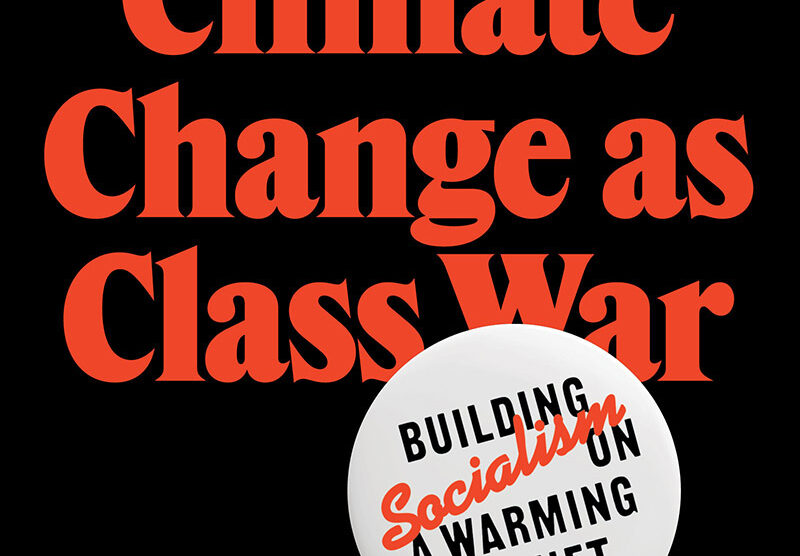August 23, 2020
The Tragedy of American Science: An Epilogue
By Cliff Conner
Book Excerpt

Cliff Conner’s The Tragedy of American Science describes how science in the United States has been coopted by military and corporate forces, transforming what could be an instrument of discovery into one of death and destruction. Below, you’ll find an excerpt from the book’s epilogue discussing COVID-19 and the present moment. You can learn more about The Tragedy of American Science in this discussion hosted by Haymarket Books. Read a review of Conner’s book in our upcoming Bio-Politics issue of Science for the People magazine.
Trump Is But a Symptom of a Systemic Failure
Understanding the COVID-19 pandemic not as a unique emergency but as one episode in a series of growing threats attests that the Trump administration, for all its perfidious bungling, is not the main story. Trump and his allies made a terrible situation worse but did not cause it, and voting them out of office will not make the problem go away. Much more profound remedies are necessary, and that message seems to be gaining unprecedented attention from the American public.
The exposure in 2020 of inadequate medical supplies and hospital capacity throughout the United States disclosed a crisis four decades in the making. The shortage of intensive care unit beds and ventilators is not a matter of poor planning or criminal negligence; it was a crime committed with intent. It was the culmination of a policy of intentional downsizing of hospital emergency capacity that began during the Reagan administration and has continued to the present.
Historian Mike Davis describes the consequences of “years of profit-driven cutbacks of in-patient capacity”:
According to the American Hospital Association, the number of in-patient hospital beds declined by an extraordinary 39 percent between 1981 and 1999. The purpose was to raise profits by increasing “census” (the number of occupied beds). But management’s goal of 90 percent occupancy meant that hospitals no longer had the capacity to absorb patient influx during epidemics and medical emergencies.1
The profit-driven cutbacks of in-patient capacity persisted into the twenty-first century, through Republican and Democratic administrations alike. Serious hospital bed shortages in both the 2009 and 2018 flu seasons foretold danger ahead, but policymakers studiously ignored the warnings. By March 2020, US hospitals could provide only 65,000 intensive care unit beds, while “government planning assumptions based on past flu pandemics suggest a surge in demand for intensive care that could range somewhere between 200,000 and 2.9 million patients.”2
Davis also exposed the roots of another critical deficiency in pandemic preparedness: Big Pharma’s underinvestment in antibiotic and antiviral research because it offers less profit potential:
Of the eighteen largest pharmaceutical companies, fifteen have totally abandoned the field. Heart medicines, addictive tranquilizers, and treatments for male impotence are profit leaders, not the defenses against hospital infections, emergent diseases, and traditional tropical killers. A universal vaccine for influenza — that is to say, a vaccine that targets the immutable parts of the virus’s surface proteins — has been a possibility for decades but never profitable enough to be a priority.3
The Macroeconomic Fallout
This public health crisis has triggered the fastest economic meltdown in American history, exposing the inadequacy of the US economic system to cope with a challenge of these dimensions. With the public interest under siege, the private enterprise system flailed and failed. As the country was confronted with massive job losses and a rapid decline in economic activity, wealthy investors scrambled to protect their own business interests, and all hopes for salvation focused on a $2.2 trillion federal bailout, which quickly proved to be insufficient. The limitations and unreliability of the current economic system have no doubt only begun to be exposed.
In the first days of 2020, I wrote in the concluding chapter of this book that the tragedy of American science could not be resolved without a total overhaul of the country’s economic system, and proposed as necessary steps in that direction the nationalization of Big Pharma, the fossil fuel industry, the banks, the insurance companies, and the military contractors. Nationalization alone is not enough, but it can lead toward socialization—a nationalized economy administered by a government that represents the entire society rather than a minuscule superwealthy elite
I cited, in a footnote, some harbingers of hope that demands for nationalizations were just beginning to gain serious attention in the public discourse. But in the wake of the economic chaos triggered by the pandemic, what began as a trickle has become a flood, as these headlines attest:
Will COVID-19 Force Nationalization of Manufacturing?4
COVID-19 Crisis Fighters Say the US Must Nationalize Healthcare Equipment Production5
It’s Time to Nationalize the Airlines6
Green Group Urges Nationalization of Oil and Gas Industry Amid Coronavirus Outbreak and Economic Upheaval7
France, Italy, Spain in Bid to Nationalize Businesses, Hospitals as Virus Hits8
Pillars of establishment journalism in the United States began publishing opinion pieces calling for federal intervention in the US economy. A New York Times article headlined “How the World’s Richest Country Ran Out of a 75-Cent Face Mask” attributed the scandalous lack of pandemic readiness to “capitalism consuming our national preparedness and resiliency.” The author lamented:
What a small, shameful way for a strong nation to falter: For want of a 75- cent face mask, the kingdom was lost. . . . Perhaps the only way to address the shortfall now is to recognize that the market is broken, and to have the government step in.9
The Trump administration, not surprisingly, angrily rejected calls for nationalizations, but their fury revealed that the enemies of science and reason are now on the defensive. Meanwhile, they found themselves obliged to invoke the Defense Production Act to produce ventilators and other critical medical supplies, thus demonstrating that the investor class is not essential to the production system. At the same time, the need for a multitrillion-dollar federal intervention dealt a powerful rebuke to rightwing “small government” demagogy, removing a major roadblock to the case for socialism. These remarkable turnabouts in the national conversation should encourage all who recognize the pivotal nature of the times we live in.
Socialism or Dystopia?
Will the social dislocations provoked by COVID-19 endure for weeks, months, or years? If it goes away, will it come back? If so, when and how often? If not, will more deadly viruses arise every flu season? These are questions not even the epidemiologists can answer.
These unknowable aspects of our future make our present uneasy. Will the tens of millions of jobs that vanished in an eyeblink ever reappear? Will visitations of these plagues periodically condemn us to go stir-crazy in self-quarantine? To don gloves and masks every time we go out the door? To forever “socially distance” ourselves from friends, neighbors, and loved ones? To endure a dismal existence without sports, concerts, plays, parties, and restaurants, and with only “virtual” museums?
But one important fact is known. As long as our collective fate is in the grasp of an economic system that allows industrial poultry farms to generate novel viruses, the constant threat of recurring dystopia will hang over our heads.10
The agribusiness proprietors of the factory farms are aware that dangerous viruses are their inevitable byproducts. They are also aware that the social costs of the pandemics they create are not borne by them. They expect capitalist governments to keep cleaning up the deadly messes their infections cause. The early indications of the 2020 pandemic, however, raise doubts as to whether capitalist governments are capable of doing so. Multitrillion-dollar corporate bailouts may prove inadequate to save the world capitalist order from total meltdown. And then what?
The stakes have been raised to the sky. The need to replace the global economic system that serves private interests with one that serves the public interest is more urgent than ever. In the course of that struggle, American science, from epidemiology to etiology to ecology to economics, can redeem itself by socializing its practice and illuminating the path forward.
A thorough socialization of the American economy, combined with democratic determination of national science policy, would free American science from corporate bondage. By replacing business competition with cooperation as the driving force of science, the patent system could be rendered irrelevant, and secrecy could give way to knowledge-sharing. Social ownership of Big Pharma and for-profit health care could shift research to federal laboratories to create vaccines to protect the public, not enrich investors. Social ownership of Big Food could begin the transition to regenerative agriculture, with technologies geared not to profiting food corporations but to revitalizing the soil and preventing the industrialized production of viral pandemics. If we can survive the crisis at hand, resolving the tragedy of American science is not a hopeless cause.
—
Clifford D. Conner taught history of science at the School of Professional Studies, CUNY Graduate Center. He is the author of A People’s History of Science (Bold Type Books, 2005) and Jean Paul Marat: Tribune of the French Revolution (Pluto Press, 2012).
References
- Mike Davis, “In a Plague Year,” Jacobin, March 14, 2020, https://jacobinmag.com/2020/03/mike-davis-coronavirus-outbreak-capitalism-left-international-solidarity
- Martin Kaste, “U.S. Hospitals Prepare for a COVID-19 Wave,” National Public Radio, March 6, 2020, https://www.npr.org/2020/03/06/812967454/u-s-hospitals-prepare-for-a-covid-19-wave.
- Mike Davis, “In a Plague Year,” Jacobin, March 14, 2020, https://jacobinmag.com/2020/03/mike-davis-coronavirus-outbreak-capitalism-left-international-solidarity
-
Paula Hollywood, “Will COVID-19 Force Nationalized Manufacturing?” ARC Advisory Group, arcweb.com, March 18, 2020, https://www.arcweb.com/blog/will-covid-19-force-nationalized-manufacturing.
-
Tim Fernholz, “Covid-19 crisis fighters say the US must nationalize healthcare equipment production,” Quartz, March 22, 2020, https://qz.com/1822996/covid-19-crisis-fighters-say-us-must-nationalize-healthcare-equipment-production/.
-
Alexander Sammon, “It’s Time to Nationalize the Airlines,” The American Prospect, March 18, 2020, https://prospect.org/economy/time-to-nationalize-the-airlines/.
-
Julia Conley, “Green Group Urges Nationalization of Oil and Gas Industry Amid Coronavirus Outbreak and Economic Upheaval,” Common Dreams, March 23, 2020, https://www.commondreams.org/news/2020/03/23/green-group-urges-nationalization-oil-and-gas-industry-amid-coronavirus-outbreak-and.
- Daily Sabah, “France, Italy, Spain in bid to nationalize businesses, hospitals as virus hits,” dailysabah.com, March 17, 2020, https://www.dailysabah.com/business/france-italy-spain-in-bid-to-nationalize-businesses-hospitals-as-virus-hits/news.
-
Farhad Manjoo, “How the World’s Richest Country Ran Out of a 75-Cent Face Mask,” New York Times, March 25, 2020, https://www.nytimes.com/2020/03/25/opinion/coronavirus-face-mask.html.
- Rob Wallace, Big Farms Make Big Flu: Dispatches on Infectious Disease, Agribusiness, and the Nature of Science (Monthly Review Press, 2016).





